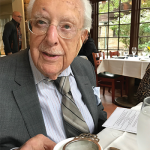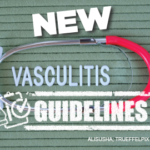“When there are substantial changes in the field, that triggers a process of revising guidelines, or the components of guidelines that require revision,” explains Dr. Caplan. “For example, the axial spondyloarthritis guidelines were published in 2015, and they are already undergoing revision because there have been major changes.”
There is inevitably a lag time between when new data become available and when the guidelines can reflect those important changes. But that is partly why the guidelines are just that—guidelines—to be used in conjunction with physician expertise.
In terms of the ACR, the process of guideline development is ongoing. New guidelines for psoriatic arthritis, juvenile idiopathic arthritis and reproductive health should be available in 2018, as well as an update for axial spondyloarthritis. Updated osteoarthritis guidelines are expected to be published in spring 2019, with RA and gout updates to follow in late 2019.
Ruth Jessen Hickman, MD, is a graduate of the Indiana University School of Medicine. She is a freelance medical and science writer living in Bloomington, Ind.
References
- Woolf S, Schünemann HJ, Eccles MP, et al. Developing clinical practice guidelines: Types of evidence and outcomes; values and economics, synthesis, grading, and presentation and deriving recommendations. Implement Sci. 2012 Jul 4;7:61.
- Weisz G, Cambrosio A, Keating P, et al. The emergence of clinical practice guidelines. Milbank Q. 2007 Dec;85(4):691–727.
- Singh JA, Saag KG, Bridges SL, et al. 2015 American College of Rheumatology guideline for the treatment of rheumatoid arthritis. Arthritis Rheumatol. 2016 Jan;68(1):1–26.
- Institute of Medicine (US) Committee on Standards for Developing Trustworthy Clinical Practice Guidelines, et al. Clinical Practice Guidelines We Can Trust. Washington (DC): National Academies Press (US); 2011.
- Greenfield S. Clinical practice guidelines: Expanded use and misuse. JAMA. 2017;317(6):594–595.
- Khanna D, FitzGerald JD, Khanna PP, et al. 2012 American College of Rheumatology guidelines for management of gout part I: Systematic non-pharmacologic and pharmacologic therapeutic approaches to hyperuricemia. Arthritis Care Res (Hoboken). 2012 Oct;64(10):1431–1446.
- Hochberg MC, Altman RD, April KT, et al. American College of Rheumatology 2012 recommendations for the use of nonpharmacologic and pharmacologic therapies in osteoarthritis of the hand, hip, and knee. Arthritis Care Res (Hoboken). 2012 Apr;64(4):465–474.
- Ward MM, Deodhar A, Akl EA, et al. American College of Rheumatology/Spondylitis Association of America/Spondyloarthritis Research and Treatment Network 2015 recommendations for the treatment of ankylosing spondylitis and nonradiographic axial spondyloarthritis. Arthritis Rheumatol. 2016 Feb;68(2):282–298.
- Dejaco C, Singh YP, Perel P, et al; European League Against Rheumatism; American College of Rheumatology. 2015 Recommendations for the management of polymyalgia rheumatica: A European League Against Rheumatism/American College of Rheumatology collaborative initiative. Ann Rheum Dis. 2015 Oct;74(10):1799–1807.
- Buckley L, Guyatt G, Fink HA, et al. 2017 American College of Rheumatology guideline for the prevention and treatment of glucocorticoid-induced osteoporosis. Arthritis Rheumatol. 2017 Aug;69(8):1521–1537.
- Goodman SM, Springer B, Guyatt G, et al. 2017 American College of Rheumatology/American Association of Hip and Knee Surgeons guideline for the perioperative management of antirheumatic medication in patients with rheumatic diseases undergoing elective total hip or total knee arthroplasty. Arthritis Rheumatol. 2017 Aug; 69(8):1538–1551.
- Guyatt GH, Oxman AD, Vist GE, et al. GRADE: An emerging consensus on rating quality of evidence and strength of recommendations. BMJ. 2008 Apr 26; 336(7650):924–926.
- Tricoci P, Allen JM, Kramer JM, et al. Scientific evidence underlying the ACC/AHA clinical practice guidelines. JAMA. 2009 Feb 25;301(8):831–841.
- Khan AR, Khan S, Zimmerman V, et al. Quality and strength of evidence of the Infectious Diseases Society of America clinical practice guidelines. Clin Infect Dis. 2010 Nov 15;51(10):1147–1156.
- Alseiari M, Meyer KB, Wong JB. Evidence underlying KDIGO (Kidney Disease: Improving Global Outcomes) Guideline Recommendations: A systematic review. Am J Kidney Dis. 2016 Mar;67(3):417–422.
- Murad MH, Asi N, Alsawas M, Alahdab F. New evidence pyramid. Evid Based Med. 2016 Aug;21(4):125–127.
- Hunt SA, Abraham WT, Chin MH, et al. ACC/AHA 2005 guideline update for the diagnosis and management of chronic heart failure in the adult: A report of the American College of Cardiology/American Heart Association Task Force on Practice Guidelines. Circulation. 2005 Sep 20;112(12):e154–e235.
- Duarte-García A, Zamore R, Wong JB. The evidence basis for the American College of Rheumatology practice guidelines. JAMA Intern Med. 2018 Jan 1;178(1):146–148.
- Glintborg B, Østergaard M, Krogh NS, et al. Clinical response, drug survival and predictors thereof in 432 ankylosing spondylitis patients after switching tumour necrosis factor α inhibitor therapy: Results from the Danish nationwide DANBIO registry. Ann Rheum Dis. 2013 Jul;72(7):1149–1155.



